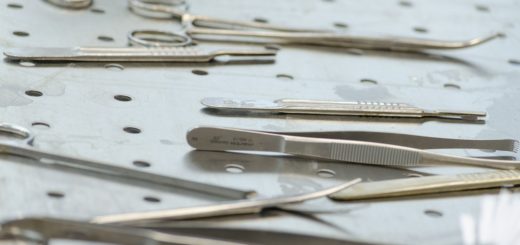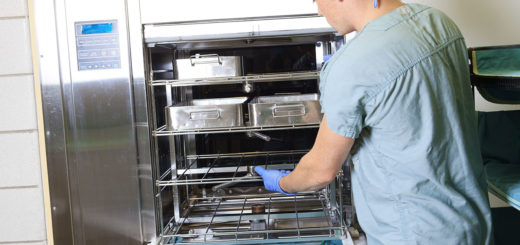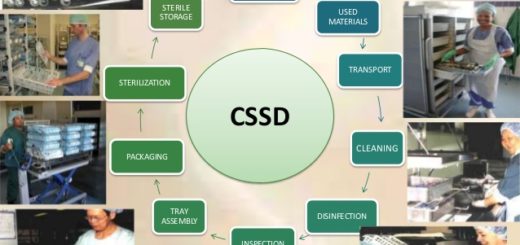Sterile Processing: Importance, Procedures, and Best Practices
If you’ve ever had surgery or been hospitalized, you’ve likely benefited from the work of sterile processing professionals. Sterile processing is a crucial aspect of healthcare, ensuring that all medical instruments and equipment are properly cleaned, disinfected, and sterilized to prevent the spread of infection and disease.
The process of sterile processing involves a series of steps, including cleaning, disinfection, and sterilization. Sterile processing professionals are responsible for ensuring that all medical equipment is properly cleaned and decontaminated before being sterilized. They must also ensure that the equipment is properly packaged and labeled to prevent contamination during storage and transport.
Proper sterile processing is essential to patient safety, and it requires a high level of skill and attention to detail. Sterile processing professionals must stay up-to-date on the latest techniques and technologies to ensure that they are providing the best possible care to patients.
Importance of Sterile Processing
Sterile processing is a critical part of the daily operations at any healthcare facility. It involves the cleaning, disinfection, and sterilization of medical devices, instruments, and equipment to ensure that they are free from harmful microorganisms that can cause infections. Proper sterile processing is essential for maintaining patient safety and preventing the spread of infections in healthcare settings.
Patient Safety
The main reason why sterile processing is so important is that it directly impacts patient safety. When medical devices and instruments are not properly cleaned and sterilized, they can become contaminated with harmful bacteria, viruses, and other microorganisms that can cause infections. These infections can be particularly dangerous for patients who are already sick or have weakened immune systems. By ensuring that all medical equipment is properly sterilized, healthcare facilities can minimize the risk of infection and protect their patients from harm.
Infection Control
In addition to protecting patient safety, sterile processing is also essential for infection control. Healthcare-associated infections (HAIs) are a major problem in healthcare settings, and they can have serious consequences for patients. By ensuring that all medical equipment is properly sterilized, healthcare facilities can reduce the risk of HAIs and prevent the spread of infections from one patient to another. This is particularly important in settings like hospitals, where patients are often in close proximity to one another and may be more susceptible to infections.
In conclusion, sterile processing is a crucial part of healthcare operations that directly impacts patient safety and infection control. By ensuring that all medical equipment is properly cleaned and sterilized, healthcare facilities can minimize the risk of infections and protect their patients from harm.
READ: What is CSSD or Sterile Processing Department
Sterile Processing Techniques
When it comes to sterile processing, there are several techniques you need to be familiar with to ensure that medical instruments are properly cleaned and sterilized. Two key techniques are cleaning and decontamination, and sterilization methods.
Cleaning and Decontamination
The first step in sterile processing is cleaning and decontamination. This involves removing any visible debris or contaminants from the medical instruments. There are several methods for cleaning and decontamination, including manual cleaning, mechanical cleaning, and ultrasonic cleaning.
Manual cleaning involves physically scrubbing the instruments with a brush and detergent solution. Mechanical cleaning uses machines that spray the instruments with cleaning solutions and then rinse them to remove any debris. Ultrasonic cleaning uses high-frequency sound waves to create tiny bubbles that scrub the instruments clean.
After cleaning, the instruments must be decontaminated to kill any remaining microorganisms. This is typically done using a chemical disinfectant or by placing the instruments in an autoclave for sterilization.
Sterilization Methods
Once the instruments have been cleaned and decontaminated, they must be sterilized to ensure that they are completely free of microorganisms. There are several methods for sterilization, including:
- Autoclaving: This involves placing the instruments in a chamber and subjecting them to high-pressure steam to kill any microorganisms.
- Dry heat sterilization: This involves heating the instruments to a high temperature for a prolonged period of time to kill any microorganisms.
- Chemical sterilization: This involves using a chemical solution to sterilize the instruments. However, this method is typically reserved for instruments that cannot withstand the high temperatures of autoclaving or dry heat sterilization.
It’s important to note that not all instruments can be sterilized using the same method. Some instruments may be damaged by high temperatures or certain chemicals, so it’s important to follow the manufacturer’s instructions for cleaning and sterilization.
Equipment and Tools
When it comes to sterile processing, having the right equipment and tools is essential. The following sub-sections will provide an overview of some of the most common equipment and tools used in sterile processing.
Sterilizers
Sterilizers are a critical component of any sterile processing department. They use heat, pressure, and sometimes chemicals to kill microorganisms and ensure that surgical instruments and other medical equipment are safe for patient use. There are several different types of sterilizers, including:
- Gravity displacement sterilizers
- Pre-vacuum sterilizers
- Steam flush-pressure pulse sterilizers
Each type of sterilizer has its own advantages and disadvantages, and the type you choose will depend on your specific needs and preferences.
Ultrasonic Cleaners
Ultrasonic cleaners use high-frequency sound waves to clean surgical instruments and other medical equipment. They are particularly effective at removing debris and other contaminants from hard-to-reach areas, such as the crevices of surgical instruments. Ultrasonic cleaners are often used in conjunction with other cleaning methods, such as washer-disinfectors, to ensure that instruments are thoroughly cleaned and ready for sterilization.
Washer-Disinfectors
Washer-disinfectors are automated machines that clean and disinfect surgical instruments and other medical equipment. They use a combination of water, detergent, and sometimes disinfectant to remove debris and kill microorganisms. Washer-disinfectors are a popular choice for many sterile processing departments because they are efficient, effective, and easy to use.
Challenges in Sterile Processing
Sterile processing is a critical component of any healthcare facility. It is responsible for ensuring that all medical instruments and equipment are properly sterilized and safe for patient use. However, there are several challenges that sterile processing departments face on a regular basis. In this section, we will discuss two major challenges: human error and equipment malfunctions.
Human Error
Human error is one of the most common challenges faced by sterile processing departments. Even with the most rigorous training and protocols in place, mistakes can still happen. Some examples of human error in sterile processing include:
- Incorrectly labeling instruments
- Not following proper sterilization procedures
- Not properly cleaning instruments before sterilization
- Not properly storing instruments after sterilization
These errors can lead to contaminated instruments, which can then lead to patient infections. It is important for sterile processing departments to have strict quality control measures in place to minimize the risk of human error.
READ: How to Become a Sterile Processing Technician
Equipment Malfunctions
Another challenge faced by sterile processing departments is equipment malfunctions. The sterilization equipment used in these departments is complex and requires regular maintenance to ensure that it is functioning properly. Some common equipment malfunctions include:
- Malfunctioning sterilization equipment
- Improperly calibrated equipment
- Equipment breakdowns during the sterilization process
Equipment malfunctions can cause delays in the sterilization process, which can lead to a backlog of instruments that need to be sterilized. This can impact patient care and cause frustration for healthcare providers. It is important for sterile processing departments to have a maintenance schedule in place for all equipment and to promptly address any malfunctions that occur.
Future of Sterile Processing
As technology continues to advance, the future of sterile processing looks promising. With the introduction of automation and robotics, and advancements in sterilization techniques, the industry is poised to become more efficient and effective than ever before.
Automation and Robotics
Automation and robotics are changing the face of sterile processing. These technologies can perform repetitive tasks with greater accuracy and speed than humans, reducing the risk of human error and increasing efficiency. Robotic systems can also operate 24/7, allowing for faster turnaround times and increased productivity.
One example of an automated system is the STERRAD® Systems from Advanced Sterilization Products (ASP). These systems use hydrogen peroxide gas plasma technology to sterilize medical instruments quickly and effectively. The technology is designed to adapt to the changing demands of sterile processing, ensuring that it remains future-proof.
Advancements in Sterilization Techniques
Advancements in sterilization techniques are also contributing to the future of sterile processing. For example, low-temperature sterilization methods, such as hydrogen peroxide gas plasma and vaporized hydrogen peroxide, are becoming more popular. These methods can sterilize delicate instruments that cannot withstand traditional high-temperature sterilization methods.
Another example is the use of single-use medical devices. These devices are designed to be used once and then discarded, eliminating the need for sterilization altogether. While this approach may not be feasible for all medical devices, it can be a cost-effective and efficient solution for certain instruments.
Overall, the future of sterile processing looks bright. With the introduction of automation and robotics, and advancements in sterilization techniques, the industry is poised to become more efficient, effective, and safe than ever before.


